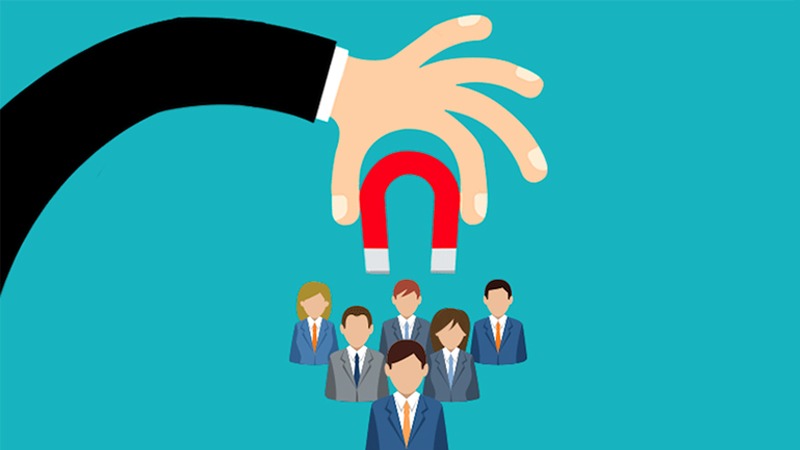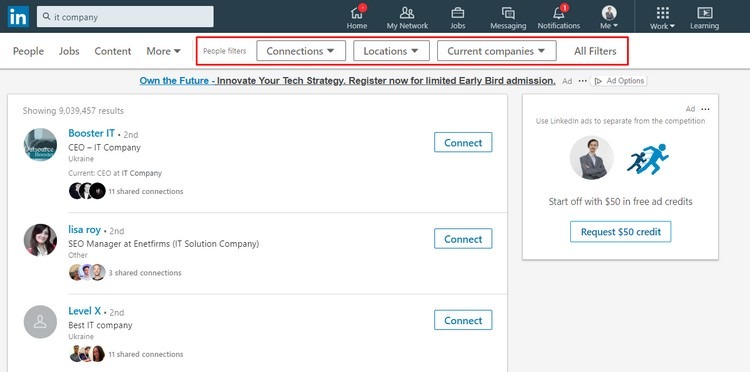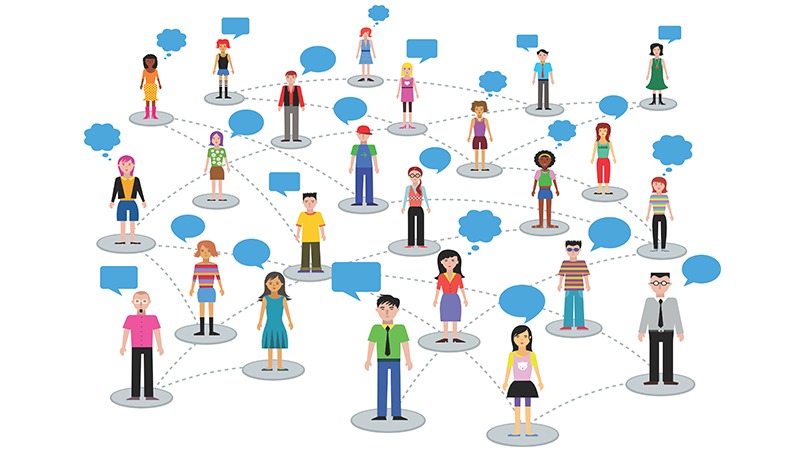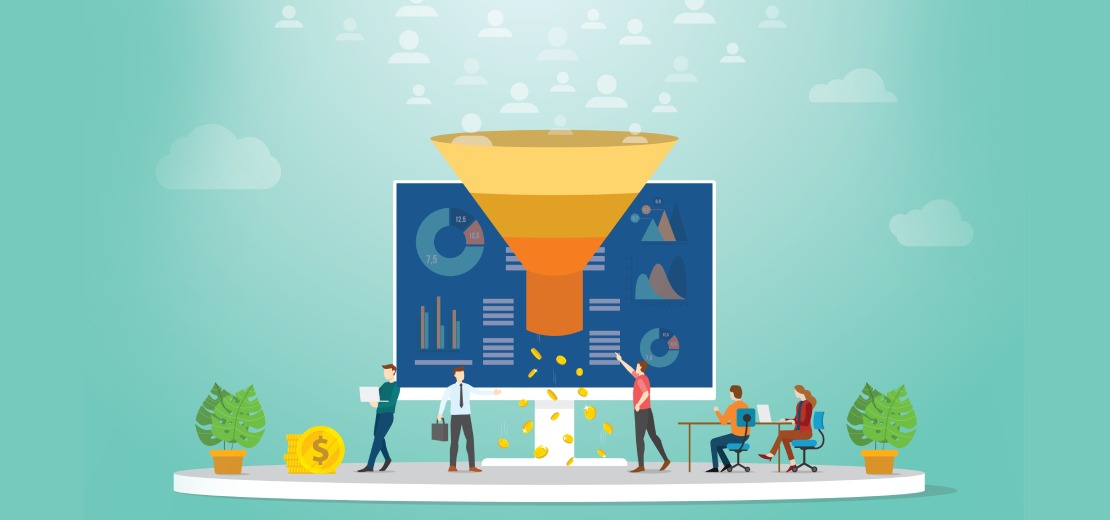There is a way to achieve success. However, the conventional LinkedIn advice is not detailed enough:
- Join.
- Stay active and build up contacts.
- Get leads.
Okay, but how do you develop a real LinkedIn B2B marketing strategy?
You might get the odd lead coming to you through luck, but in order to really make it, you will need to do your own work… but in LinkedIn style! How do you stand above the crowd of job seekers to find qualified people and good LinkedIn leads?
<
Here, I’ll share seven tips that will help you gain familiarity with LinkedIn as a powerful B2B marketing tool and, ultimately, how to develop a LinkedIn marketing strategy.
Here’s the deal: in just about any marketing space, content is the driving force for funnel leads. If you are already an expert at LinkedIn content marketing strategy, then congratulations! That’s the most important first step. However, none of this will matter unless you are dealing with the right audience. LinkedIn can make this easier for you.
When marketing B2B, LinkedIn really serves as an excellent tool. Its publishing platform and career-driven approach to social networking make LinkedIn the ideal place for businesses to share content.
What Is LinkedIn B2B Lead Generation?
Lead generation deals with all the services and processes that go into customer identification. Leads don’t just improve your sales pipeline; they drive it. They are therefore at the center of your business.

The best way to use LinkedIn for sales leads is to balance the quantity of your leads and their quality. Leads become paying customers, and thus, your leads are the heart of your business. B2B lead generation tends to be more targeted than B2C due to a more specific market, and that is true when looking for leads on LinkedIn as well.
Why Use LinkedIn for B2B Lead Generation?
LinkedIn is one of the most effective tools for B2B marketing. In a recent survey conducted by HubSpot, LinkedIn was 277% more successful than Twitter or Facebook for lead generation! LinkedIn provides more than 80% of all leads and was ranked as the most useful social channel by 66% of survey participants.

There are five steps you can take for LinkedIn B2B generation. These are:
- Optimizing your LinkedIn Profile
- Using targeted searches to find your ideal leads
- Offering help to everyone
- Doing things automatically, while adding personal touches
- Landing your clientele
LinkedIn Checklist to Attract More B2B Leads
Step 1. Adjust Your LinkedIn Profile
You must augment your profile to generate leads from LinkedIn. You have to make it simple for people to find you!
Consider the client first. You should show the reason you’re the best fit for your client, section by section. Using “I” instead of “we” can help make you sound more approachable! “We” often sounds too stuffy.
Pay close attention to these things:
- Headline: The headline is the first thing the client will see and thus is very important when using LinkedIn for sales leads. Your heading should catch the eye of your target audience. Always think in terms of the benefit you can provide, rather than just stating a simple fact.
- Summary: This is one of the most crucial elements of your LinkedIn profile. The most important information should always go first, as the bottom part doesn’t show up until someone views it with the ‘see more’ button. Including a convincing “call to action” is a great way to accelerate your lead generation.
- Experience: The experiences you present should be tailored with your potential clients in mind. Be results driven. Don’t focus on your responsibilities, but on what you contributed.
- Skills: Add only your most appropriate skills. Encourage the connections you have made to promote these skills as well. Make sure the skills you want your connections to endorse are at the top of your list.
- Recommendations: This section is essential for B2B lead generation on LinkedIn. Reach out to past or recent clients to gain testimonials to place as recommendations on your page.
- A Professional Photo: It may seem obvious, but having a professional profile photo can make all the difference. There are some profiles with no picture at all or with photos that are cropped in awkward ways. Make sure your profile photo is centered and professional – no cropped friend group selfies!
The most significant requirement before you can successfully use LinkedIn to generate leads, however, is keyword optimization. Include important keywords you expect your clients to search for throughout your profile. The key is specifics. Don’t overgeneralize and call yourself a ‘CEO’ or ‘Founder.’ Let your niche shine through with the keywords your clients are actually searching for.
Other Resources:
If you are not sure where to start, download our checklist for free; it can help you get to 10x your prospects in less than an hour. Don’t hesitate to get your LinkedIn profile optimization checklist now, absolutely free!
Want more tips and tricks to generate more LinkedIn sales leads? Then check out our tips for LinkedIn Profile Optimization!
Step 2: Use Targeted Search Queries to Find the Best Prospects
Using specific keyword searches is your answer to navigating the LinkedIn world among 500 million members.
The key is filtering to match your particular buyer persona and going from there by searching for essential keywords. Start your primary search with keywords like “IT Company” or “CMO” and from there, you will be able to filter it by using LinkedIn’s filter options, which is presented at the top of the search results.

You are able to narrow down your searches by company, location, name, connections, and other criteria. Connection type is especially important. You most likely will want to filter “2nd degree connections” from the drop-down list. Mutual connections mean more potential clients who might accept your connection requests!
Remember again that others also use keywords to find you. This is why it is so important to highlight the search words in your profile for LinkedIn lead generation.
As of yet, there is no authorized tool available for LinkedIn keyword research. Instead, you can use Ubersuggest or Google Keyword Planner to help you create a keyword list to use so that clients may find you.
Other Resources:
It can be a great idea to try Advanced search as a LinkedIn lead generation tool.
Step 3: Offer Help to Everyone
In order to grow your LinkedIn network, you should give potential clients a solid explanation so they have a reason to say “YES”. The more connections you get on LinkedIn, the better! People are willing to connect if they see you as an expert or someone who might possibly be a beneficial contact, so take advantage of that. After all, the best ways to build connections are through mutually shared connections.
Step 4. Automate Procedures – But Don’t Neglect to Add a Special Touch
We’ve created a complete technique that works around automation. Using a Virtual Assistant, such as Hootsuite or Meet Edgar, should also help by distributing personalized content on a daily basis. You don’t need to worry about duplicating your work, either. Republishing blog content won’t cause any duplicate content consequences in this case.
Step 5. Land Your Potential Clients
Never ever sell on LinkedIn. Before you try to pitch anything, move to the phone. This is incredibly important!
If you cannot help the prospect over the phone, or if your product doesn’t suit them, refer them to somebody else, so they continue to think of you as helpful. This builds your reputation in the long run.
The 3 Pillars of Sales Lead Generation
The 3 Pillars of Sales Lead generation are: finding qualified buyers, helping qualified buyers to notice you, and finally, creating a subtly tuned referral engine. Those are the basics of it! Now, to tackle each pillar separately:
Find Qualified Buyers
Few Research states that currently 69% of Americans use some sort of social media. That’s huge, especially considering it’s up from 5% a mere 10-12 years ago. This should make it obvious why you need to optimize your LinkedIn in order to find your buyers.
No one said that generating leads over social media was an easy process, however. As mentioned above, you should be focusing on the connections you already have, and not making any cold calls. Building relationships should be the primary focus of your sales lead generation.

The key here is to join LinkedIn groups yourself and to participate in discussions on those groups. Liking posts from potential clients on LinkedIn also serves as a great gateway to showcase that you are interested. Your connections can serve as your influencers as well, so make the most of them! You can also use SalesNavigator to help with your LinkedIn B2B lead generation.
Getting Qualified Buyers to Find You
This is where the search engine optimization and keywords come in and why they are so important! Making yourself noticeable through the connections you have already made and the keywords people are searching for will significantly increase the amount of leads generated. Here are a few stats:
- 74% of B2B buyers make half of their purchases online
- 75% of B2B buyers choose social media when making purchasing decisions
- Contrary to earlier advice to conduct business over the phone, only 16% of buyers actually prefer that (and only 12% want to meet in person).
Customers usually don’t want to be bothered and will reach out to you on their own if you make yourself easy to find.
TIPS:
- Using the automation approach lets you post frequently on LinkedIn. This means you’re constantly updating and available. Remember that a constant stream of tailored content looks good for potential leads.
- Commenting and liking on LinkedIn helps to build up your network. So does reaching out to clients who may know a connection you already have
- Again, optimizing your profile is absolutely essential! Smart use of keywords cannot be over-emphasized!
Getting Sales Referrals
It is very important to collect referrals from your former and current clients in order to develop new clientele.
- 84% of B2B purchases begin with a referral
- Referral leads translate to 30% more than non-referrals
- Referred customers have a 16% higher lifetime value

We almost exclusively rely on the opinions of others, especially when those connections start to pile up and a potential client needs that final push to look into the product you’re selling. Don’t be afraid to push buyers into talking about your product if you are confident in what you are selling! LinkedIn lets you maintain that confidence by letting clients find you first or by helping you find prospecting clients through other connections.
Sales Referral Checklist
- Provide referrals for other people. Help out!
- Focus on the personal aspect. No one wants to talk with someone who is blatantly seeking out more business.
- Have a referral program with your company.
- Use Ambassador or other referral software to optimize your searches.
- Have people spread good words about you.
- Provide a script to make it easier for buyers to refer you. If you do the extra work, then they will be more likely to provide you with a referral.
Interview with Olga Yurchenko, a Professional LinkedIn Consultant
Olga Yurchenko is a LinkedIn lead generation expert, coach, and consultant. She has years of experience and has consulted for dozens of companies and businesses. Here is an interview with Olga.
Me: What can you tell me about how to use LinkedIn for B2B marketing?
Olga: To get more B2B leads on LinkedIn, I have 3 major tips.
- Create a profile for your CEO on LinkedIn.
- Create profiles for sales experts who are in charge of searching for prospects and generating new leads on LinkedIn. They have their own goals and strategies.
- Create profiles for other people who can help you promote your company. PR specialists, HR staff, and marketing managers fall into this category. If you consider big companies, they all have people who are in charge of PR, communication, and business development.
The first resource for using LinkedIn for lead generation is the CEO or the business owner (the driver of the business). He or she shapes the mission and vision of the company. The CEO should be definitely present on LinkedIn. They represent the company.
Why? Because, as I often see it, investors tend to choose not the just the product or the company. They choose a person. They check his or her LinkedIn profile. They want to see his or her network and contacts.
Sales managers communicate with prospects, send emails, and generate and nurture leads.
PR, HR, and marketing managers help sales staff sell your services or products. They create sales materials, presentations, content, etc. so that the sales managers can easily describe the products or services they are promoting.
Thus, it is important that your business is properly represented on LinkedIn.
It should be underlined that each of these staff members has their own function on LinkedIn, and their profiles should be filled out accordingly. When checking one of your company’s profiles, a prospect should easily understand all the key points of your products or services and how your business can help him or her.
Gone are the days when people sold directly on LinkedIn. Now, it’s all about value and how you can help your prospects. Companies come to LinkedIn using this “customers come first” approach.
Forget about the “buy this great app” approach. You should communicate with your leads and help them, establishing trust and building relationships with them. Then it will be much easier for you to sell. Sometimes sales will be made naturally.
That’s why a LinkedIn lead generation strategy for your business will include strategies for each of your departments that is represented on LinkedIn.
There should be a separate strategy for the CEO, for sales representatives, and for PR, HR, and marketing managers.
The strategy for the CEO is the most important.
The strategy for sales profiles should include a customer journey map. Sales managers should know how to communicate with prospects at each stage of the funnel.
For example, very often, the sales process fails because the sales managers don’t have appropriate LinkedIn profiles or they don’t respond to prospects on time.
Even if the PR specialists are working well and the company’s presence on LinkedIn is excellent, the sale can be disrupted due to a mistake made by a sales manager.
Now, many people who are searching for prospects tend to make the same common mistake. They send tons of emails to people who are not their target audience. This makes your message seem like spam.
For example, I received an email today from a company that offers software solutions. They tried to sell me their software directly. However, I’m not their target audience. They didn’t even bother to find out my needs and suggested I buy their software straight away. This really turns people off; the effect is the opposite of what was intended.
Me: Can you talk a bit about how to use LinkedIn for sales prospecting? What hacks can you share to boost the LinkedIn sales generation process?
Olga: First of all, you should know the needs and pain points of your target audience. You should have a clear vision for your company. You should set business goals that you want to achieve. All these components will help you come up with an effective strategy.
If we’re talking about B2B sales, you should ask yourself: “How can my company help other businesses or companies?”
It’s very important to know how your customers make the decision to buy your services/products.
For example, the sales process is very complicated in the pump equipment niche. At the initial stage, sales managers engage with the prospects. Then they pass them to account managers. Then support comes in. Architects, engineers, and many other experts are involved in the sales process.
While the prospect is making a decision, everyone who participates in the sales process starts building a relationship with him or her. Using LinkedIn for sales lead generation in this way is much more effective.
It’s never the “buy pump equipment from us now” approach that works. At first, it’s all about the needs of the prospects.
What do you need? What do you build? Where do you build it? What are the most challenging difficulties that you face? Ask your prospects these questions and learn about their situation.
Once you listen to your prospects and understand them, you’ll have a great opportunity to help them.
You can then tell them this: “Well, we have solutions that can help you with your challenges.”
In this case, prospects are more likely to understand that your solutions are just what they need.
Prospect: “Yes, I really need this pump equipment!”
This is because they know exactly how it will help them, and they like you and your team because you have established a relationship with them. Even in B2B sales, one of the basic principles of business holds true: companies also buy from people, not from companies.
Thus, you should develop your personal brand. You should be active on social media platforms. You need to create your own profile and a company page.
It’s very important to build these relationships. That’s the core of LinkedIn marketing strategy for B2B.
Olga: The second hack is to make a shift from online to offline relationships.
It’s very important to understand for whom you create content. People choose people. That’s why you should try to make relationships with your prospects offline as well. Of course, not every business has this capability. However, if you can do this, your efforts will be much more effective.
Olga: Here’s the third hack. Every strategy for any social network is based on storytelling and content marketing. Don’t sell directly at the beginning. Demonstrate and explain how you can help. What value can you give? What will your client get if he or she turns to your company’s product or service? How will your solutions improve their life?
You need to deliver these messages through content. Don’t sell, but tell. Build up those relationships. That’s the best LinkedIn lead generation method.
Vladimir, you, as a content marketing expert, understand the importance of right words and images/videos at the right time.
Conclusion
LinkedIn B2B lead generation is not so difficult if you know what to do and stay focused.
LinkedIn has truly become a source to be reckoned with in the digital marketing world, and it makes sense for your business to be able to use it effectively in the modern competitive landscape.
Congrats! Now you know how to start your first LinkedIn lead generation campaign.
Did I miss anything? Do you have any super effective B2B LinkedIn lead generation technique in mind?
Share your thoughts on lead nurturing and your tips for lead generation on LinkedIn in the comments below.
Cheers!


 (6 votes, average: 4.00 out of 5)
(6 votes, average: 4.00 out of 5)